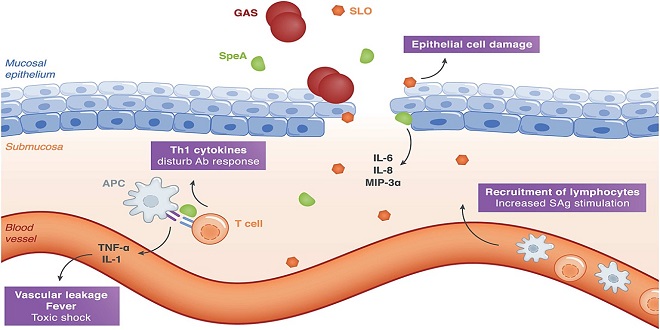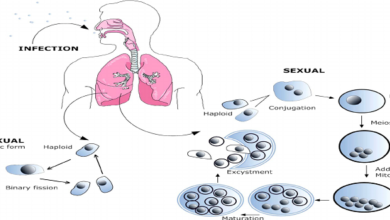
Cell death occurs eventually after initial infection with many viral species. This cytopathological cell destruction usually involves the production of viral progeny. Virus production coupled with cell destruction is termed the “lytic viral life cycle.” Cell destruction, whether necrotic or apoptotic (see below) is the reason (along with immunological phenomena) for the disease manifested in the macroorganism.
Structural changes leading to necrosis: morphological changes characteristic of a given infecting virus can often be observed in the infected cell. The effects seen in virally infected cell cultures are well-known and are designated by the term “cytopathic effect” (CPE). These effects can also be exploited for diagnostic purposes (p. 405).
They include rounding off and detachment of cells from adjacent cells or the substrate, formation of multinuclear giant cells, cytoplasmic vacuoles, and inclusion bodies. The latter are structures made up of viral and/or cellular material that form during the viral replication cycle, e.g., viral crystals in the nucleus (adenoviruses) or collections of virions and viral material in the cytoplasm (smallpox viruses).
Shutoff Phenomena Some viruses are able to block, more or less completely, steps in cellular macromolecule synthesis not useful to them. Herpesviruses, for example, which possess DNA polymerase of their own, block cellular DNA synthesis. DNA replication in adenoviruses, by contrast, is directly coupled to that of the cell.
Such shutoff phenomena apparently contribute to rapid and efficient viral replication by eliminating competing cellular synthetic processes. In polioviruses, which inhibit both transcription and translation in the host cell, the shutoff processes are induced by viral proteins that interfere with the relevant regulatory mechanisms in order to inhibit transcription and to inactivate initiation factor eIF4GII, which is not required for translation of Enterovirus mRNA, in order to inhibit translation. These shutoff phenomena of course also have a pathogenic effect since they inhibit cellular metabolism, but not in such a way as to necessarily kill the host cell.
Shutoff Phenomena Some viruses are able to block, more or less completely, steps in cellular macromolecule synthesis not useful to them. Herpesviruses, for example, which possess DNA polymerase of their own, block cellular DNA synthesis. DNA replication in adenoviruses, by contrast, is directly coupled to that of the cell. Such shutoff phenomena apparently contribute to rapid and efficient viral replication by eliminating competing cellular synthetic processes.
Virus Replication without Cell Destruction (Noncytocidal Infection)
In polioviruses, which inhibit both transcription and translation in the host cell, the shutoff processes are induced by viral proteins that interfere with the relevant regulatory mechanisms in order to inhibit transcription and to inactivate initiation factor eIF4GII, which is not required for translation of Enterovirus mRNA, in order to inhibit translation. These shutoff phenomena of course also have a pathogenic effect since they inhibit cellular metabolism, but not in such a way as to necessarily kill the host cell.
poptosis. Cells possess natural mechanisms that initiate their self-destruction (apoptosis) by means of predetermined cytoplasmic and nuclear changes. Infections with some viruses may lead to apoptosis. In rapidly replicating viruses, the viral replication process must be decelerated to allow the slow, energy-dependent process of apoptosis to run its course before the cell is destroyed by virus-induced necrosis.
Last word
The body rapidly eliminates apoptotic cells before an inflammatory reaction can develop, which is apparently why virus-induced apoptosis used to be overlooked so often. Apoptosis can thus be considered a defense mechanism, although certain viruses are able to inhibit it




